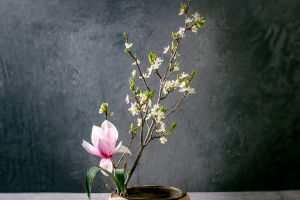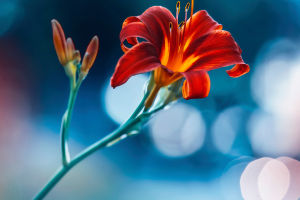Tulip Secrets Revealed
Tulips, with their elegance and beauty, have become darlings of gardening enthusiasts around the world.
However, there are many little-known facts behind these flowers that are worth uncovering.
Let’s unveil the mysteries of tulips together.
1. Form and Variation
Tulips boast a diverse and captivating array of flowers, with up to 150 natural varieties and over 5,000 cultivated types.
Their color spectrum ranges from pure white to deep purple, and even gradient hues. This rich variety of colors is primarily due to their genes. Certain tulip varieties can display different petal patterns such as stripes and spots through genetic mutations.
Even more intriguing is the fact that the color of tulip petals can be influenced by environmental factors. For example, temperature changes can affect the color of the flowers, with low temperatures enhancing color saturation. Additionally, some tulip varieties exhibit different colors during the day and night due to the pigments in the petals reacting to varying light conditions.
2. Growth and Cultivation
Tulips are autumn-planted bulbous plants that develop their root systems during the cold winter months, and then bloom quietly in spring. They require a period of cold dormancy to ensure beautiful blooms in spring. Tulip bulbs generally need to spend some time in soil temperatures below 5°C to effectively initiate growth.
When cultivating tulips, selecting well-drained soil is crucial, as excessive moisture can lead to bulb rot. The soil pH should also be kept in the neutral to slightly acidic range to promote healthy plant growth. Additionally, tulips prefer plenty of sunlight, so choosing a well-lit planting location is key to successful cultivation.
3. Short-Lived Bloom Period
Tulips have a relatively short blooming period, usually lasting only 2 to 3 weeks. Despite their brief flowering time, their beauty adds significant color to the spring season.
To extend the bloom period, it’s important to trim away withered parts before the flowers start to fade. Additionally, to encourage tulips to bloom again, continue to keep the soil moist after the flowers have faded to provide the bulbs with sufficient nutrients during their summer dormancy.
4. Medicinal and Edible Uses
Although most people view tulips as ornamental plants, they also have some medicinal value.
In traditional herbal medicine, tulip bulbs have been used as anti-inflammatory and detoxifying agents. However, caution is needed when consuming tulips, as some varieties of tulip bulbs may contain trace amounts of toxins, and excessive consumption can lead to digestive issues or other health problems.
5. Cultural Symbolism
Tulips have different symbolic meanings across various cultures. In the Netherlands, tulips are not only a national symbol but also represent prosperity and happiness.
Each spring, the Netherlands hosts a grand Tulip Festival, attracting visitors from around the world to witness the floral spectacle. In Türkiye, tulips symbolize perfection and nobility.
Conclusion
Tulips, though seemingly simple flowers, hide a wealth of historical, cultural, and biological knowledge.
Whether as ornamental plants or cultural symbols, tulips captivate our attention with their unique charm. Through this article, it is hoped that you gain a deeper understanding of these elegant flowers and appreciate their beauty in springtime.


